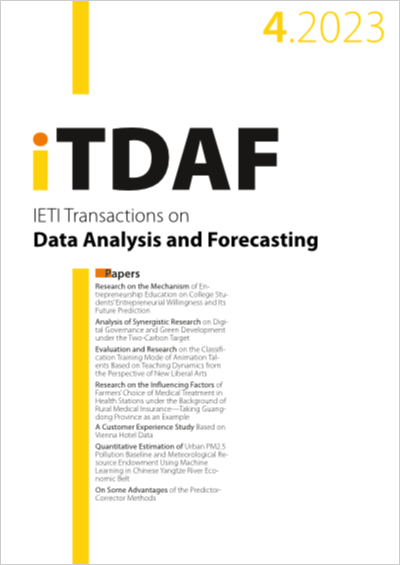Quantitative Estimation of Urban PM2.5 Pollution Baseline and Meteorological Resource Endowment Using Machine Learning in Chinese Yangtze River Economic Belt
DOI:
https://doi.org/10.3991/itdaf.v1i4.46311Keywords:
machine learning, PM2.5, meteorological resource endowments, contamination baseline, hierarchical management, Yangtze River Economic BeltAbstract
Considering the influence of baseline values, meteorological conditions, and human activities on PM2.5, quantifying them will facilitate the classification, control, and management of pollution. The machine learning model explained the PM2.5-meteorological nonlinear relationship between PM2.5 and meteorological factors in each city across the Yangtze River Economic Belt, China. Meteorological resource endowments (MRE) are used to quantify the variation on PM2.5 concentration caused by meteorological conditions. Contamination baseline (CB) is used to characterize the lowest limit of anthropogenic impact in PM2.5 contamination without meteorological interference. According to the values of MRE and CB, cities in the Yangtze River economic belt can be divided into four categories (Q1-4). The average value of MRE is −0.41 μg/m3. The average value of CB is 34.05 μg/m3, which is lower than the Chinese Grade II standard (GB 3095-2012). The additional emissions by humans resulted in an increase of 7 μg/m3 in concentration, while the meteorological factors led to a decrease of −0.41 μg/m3. In terms of city classification, Q1 is concentrated in the midstream, and PM2.5 is the most challenging pollutant to control. Q2 is concentrated downstream, with relatively high PM2.5 emissions but favorable meteorological conditions. Q3 is concentrated upstream, and there is surplus environmental capacity even with limited meteorological conditions. Cites in Q4 have the most suitable development potential and exhibit a discrete spatial distribution. The research distinguished various categories of pollution and provided insights into the different characteristics of pollution around the Yangtze River Economic Belt. This information has helped the government classify cities and implement specific policies based on their individual situations.
Downloads
Published
How to Cite
Issue
Section
License
Copyright (c) 2023 Fei Li, ChangHong Ou, Jingdong Zhang, Jinyuan Guo, Xiyao Chen, Shaojie Kong, Pei Jiang, Mian Wu

This work is licensed under a Creative Commons Attribution 4.0 International License.


